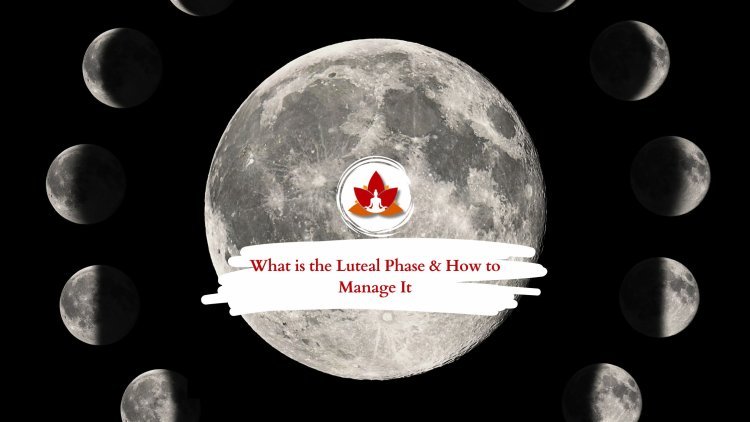When Are You in Luteal Phase? A Detailed Look at the Post-Ovulation Stage
You are in the luteal phase after ovulation has occurred. Ovulation typically happens around the middle of your cycle. For example, if you have a 28-day cycle, ovulation often takes place around day 14.
The menstrual cycle has several phases, each with its unique purpose and hormonal changes. One question many people ask when tracking their cycle is, when are you in luteal phase? Knowing the answer can help you understand your body better, whether you’re focusing on fertility, managing premenstrual symptoms, or simply becoming more aware of your hormonal health.

When Are You in Luteal Phase?
You are in the luteal phase after ovulation has occurred. Ovulation typically happens around the middle of your cycle. For example, if you have a 28-day cycle, ovulation often takes place around day 14. The luteal phase begins immediately after ovulation and continues until the first day of your next menstrual period.
So, when are you in luteal phase? From around day 15 to day 28 in a 28-day cycle. However, if your cycle is longer or shorter, the luteal phase usually still lasts around 12 to 14 days.
Why Is the Luteal Phase Important?
The luteal phase is essential because it’s the part of the cycle where the body prepares for a potential pregnancy. After ovulation, the ruptured follicle forms the corpus luteum, which produces progesterone. This hormone helps build and maintain the uterine lining, creating the right environment for a fertilized egg to implant.
If pregnancy doesn’t occur, the corpus luteum breaks down, progesterone levels fall, and menstruation begins. Understanding when are you in luteal phase is especially valuable if you are trying to conceive or want to manage hormonal symptoms effectively.
Key Symptoms of the Luteal Phase
If you’re wondering when are you in luteal phase, you can track several signs:
- Slight Rise in Body Temperature: Your basal body temperature will stay higher than in the follicular phase.
- Breast Tenderness or Swelling: This is a common symptom due to progesterone changes.
- Mood Swings or Irritability: Hormonal shifts can affect your mood.
- Bloating or Water Retention: Many people experience these physical changes in the luteal phase.
- Increased Hunger or Food Cravings: It’s typical to feel hungrier during this time.
These signs can help you identify when are you in luteal phase even if you’re not using ovulation tests.
How to Track Your Luteal Phase
If you want to know exactly when are you in luteal phase in your personal cycle, here are some reliable tracking methods:
- Basal Body Temperature (BBT) Tracking: A noticeable rise in your BBT indicates that ovulation has occurred, and you are now in the luteal phase.
- Ovulation Predictor Kits (OPKs): These help detect the hormone surge before ovulation, so you can estimate when the luteal phase starts.
- Cervical Mucus Changes: After ovulation, cervical mucus becomes thicker and less fertile.
By tracking these signs, you can pinpoint when are you in luteal phase with greater accuracy.
Luteal Phase and Fertility
For those trying to conceive, understanding when are you in luteal phase is vital. The luteal phase should ideally last at least 12 days to support implantation. A luteal phase shorter than 10 days may indicate a luteal phase defect, which can affect fertility.
If you suspect your luteal phase is too short, consult a healthcare provider for further evaluation and possible treatment options like progesterone supplements or lifestyle adjustments.
Luteal Phase and PMS
Many of the physical and emotional symptoms associated with PMS (Premenstrual Syndrome) occur during the luteal phase. Knowing when are you in luteal phase can help you prepare for and manage symptoms like:
- Irritability
- Fatigue
- Headaches
- Food cravings
When you understand this timing, you can adopt supportive practices such as gentle exercise, proper nutrition, and stress reduction techniques to ease PMS symptoms.
Tips to Support a Healthy Luteal Phase
If you’re focusing on improving your luteal phase health, consider these tips:
- Eat Balanced Meals: Include complex carbs, healthy fats, and lean proteins to support hormone production.
- Get Enough Sleep: Poor sleep can negatively affect your hormonal balance.
- Manage Stress: Chronic stress can shorten the luteal phase by affecting progesterone levels.
- Exercise Mindfully: Opt for moderate exercises like walking, swimming, or yoga instead of intense workouts.
When to Seek Medical Advice
If you notice that your luteal phase is consistently less than 10 days or you experience severe PMS symptoms, it’s a good idea to talk to your doctor. Hormonal testing and fertility evaluations can help identify any underlying issues.
Final Thoughts
Understanding when are you in luteal phase is a powerful way to connect with your body. Whether you’re tracking for conception, PMS management, or general menstrual awareness, learning the signs of this phase can help you live in better rhythm with your cycle.